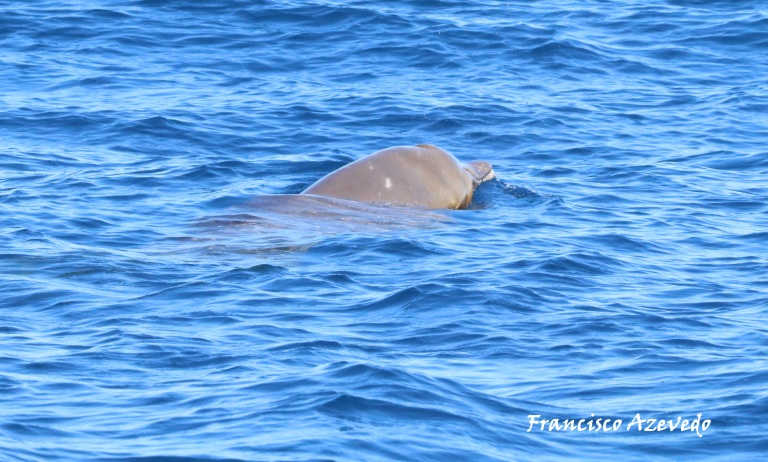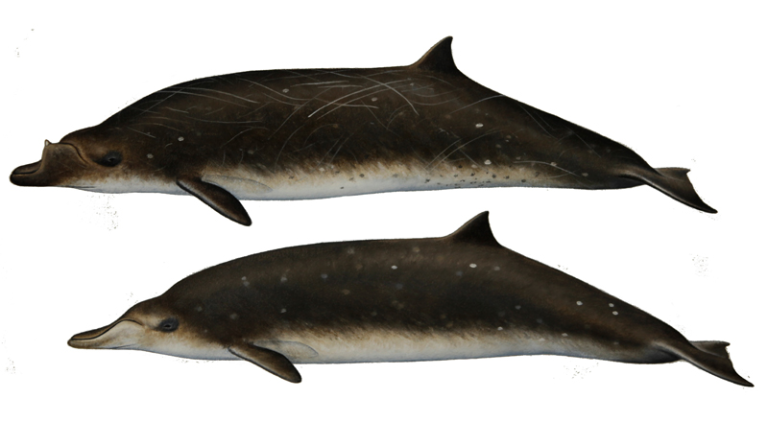Blainville's Beaked Whale
This week we had a sighting that we would like to talk about a little more: we saw Blainville's Beaked Whales (Mesoplodon densirostris).

This species of cetacean reaches a length of 3-7 meters and has a wide range of colors, from gray to brownish on the dorsal part to white on the ventral region.
Adult males have 2 large teeth that stick out from the middle of their jaw to a very pronounced curve of the mouth. Females and juvenile males have a slight curvature but not as pronounced as in adult males.

Their body often has marks (scars and scratches) often resulting from interactions with other animals of the same species.
These animals can remain submerged for 10 to 40 minutes, returning to the surface to breathe for just a few minutes before diving again. They reach depths of about 1000 meters, and can reach 14000 meters during their dives.
Blainville's Beaked Whales feed on squid and small deep-sea fish, using suction to catch them.
Little is known about these mysterious animals. They are unique creatures that are not easy to observe. That's why when we can observe them we are so excited!

Like other cetacean species, Blainville's beaked whales also suffer from real threats such as pollution, climate change and the dangers of fisheries. And despite the efforts to increasingly know this and other species of beaked whales, the truth is that this species is currently classified as DD (Data deficient) by the IUCN Red List of Threatened Species.
Come and meet this and other species with us during our whale watching trips!
